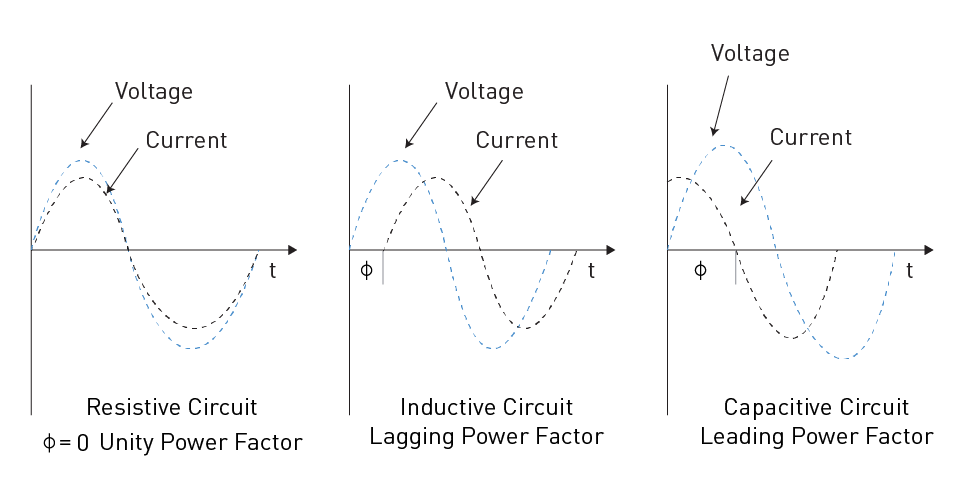Impact on Efficiency and System Capacity
Power factor, a crucial concept in alternating current (AC) power systems, measures the efficiency of converting electrical power into usable work output. When the power factor is low, it means that the electrical power is not being utilized effectively, which can have a number of negative implications on the power system's capacity as well as its efficiency. The optimization of the performance and sustainability of electrical networks requires a thorough understanding of the factors that contribute to low power factor as well as the repercussions of this phenomenon.
Causes of Low Power Factor
There are two main causes of poor power factor:
Displacement: When the voltage and current waves in a circuit are out of phase with one another, a phenomenon known as displacement takes place. This is typically caused by the presence of reactive components in the circuit, such as inductors or capacitors.
By acting on power systems, reactive loads cause the current to move in a direction that is not in phase with the voltage. The power factor can be considered the cosine of the angle that is formed as a result of the current and the voltage.
A power line that supplies an inductive load has a power factor that is lagging, whereas a power line that supplies supplies to a capacitive load has a power factor that is leading.

Figure 1: Effect of load on power factor
Inductive loads, such as motors, transformers, and inductors found in electronic equipment, consume reactive power in addition to receiving active power. Even though reactive power does not perform any practical work, it is essential for the generation of magnetic fields, which are what make it possible for these devices to function. Because of the consumption of reactive power, there is a phase shift between the waveforms of the voltage and the current, which ultimately results in a power factor that is less than one.
A feature known as capacitive reactance is shown by capacitors. This property refers to the resistance that the capacitor provides to the flow of alternating current. In AC circuits, the presence of capacitive loads causes a phase shift to occur between the voltage and the current. While the capacitor is being charged during the positive half-cycle, it is being discharged during the negative half-cycle for the capacitor. The process of charging and discharging the capacitor causes a phase difference between the voltage that is across the capacitor and the current that is flowing through it.
Distortion: Distortion is a phenomenon that is characterized by the modification of the wave's initial shape. This phenomenon is typically brought about by nonlinear circuits, such as rectifiers. There is a significant amount of harmonic content in these nonlinear waves, which causes the voltage in the grid to be distorted.
Impact on Efficiency and System Capacity
Increased Energy Losses: A poor power factor causes a higher current flow for the same amount of useful power that is delivered. This results in increased energy losses. This increased current flow results in larger resistive losses in the form of heat in cables, transformers, and other components of the distribution system, which in turn is responsible for a reduction in the overall efficiency of the system.
Reduced System Capacity: The existence of reactive power in the system causes a portion of the network's capacity to be consumed, which in turn restricts the amount of active power that can be transferred. Because of this effect, the overall capacity of the infrastructure that is responsible for electricity generation, transmission, and distribution is reduced, which means that improvements or expansions are required in order to satisfy the same levels of demand.
Voltage Drop: Significant voltage drops over transmission and distribution lines are caused by higher currents that are found in conjunction with low power factors. The operation of electrical equipment may be negatively impacted as a result of this voltage drop, which may need any necessary remedial actions in order to keep voltage levels within acceptable limits.
Increased Utility Charges: In order to compensate for the additional costs that are incurred in the process of generating and transmitting the more reactive power, many utility providers charge higher rates for customers who have low power factors. Power factor improvements have the potential to result in significant cost reductions on monthly electricity bills.


直接登录
创建新帐号